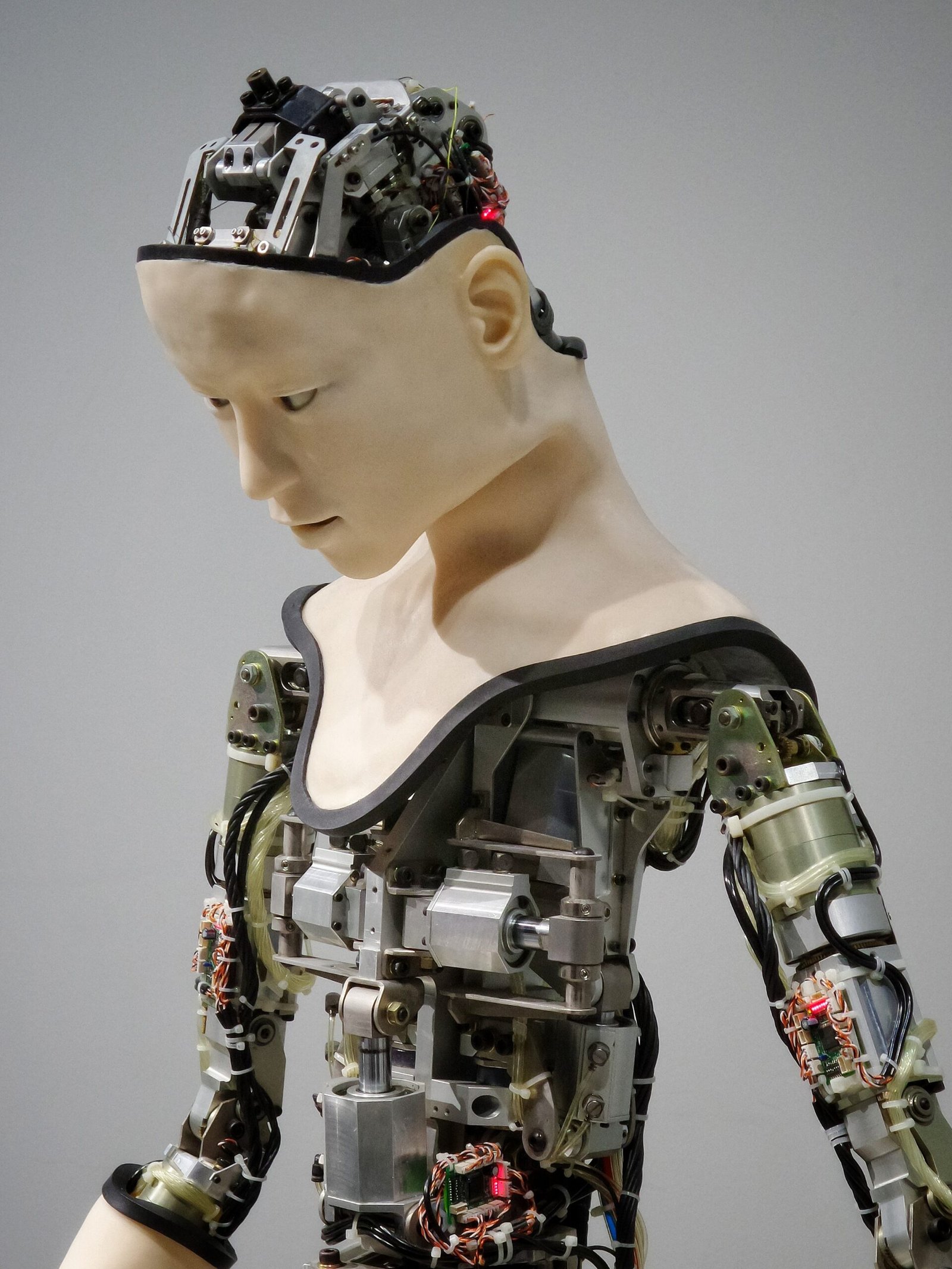Artificial Intelligence, often referred to as AI, is a term that has been buzzing around lately, but do you really know what it means? In simple terms, AI refers to the ability of a machine or computer system to imitate or simulate human intelligence. This means that AI-powered machines can perform tasks that would typically require human intelligence, such as learning, problem-solving, recognizing speech or images, and even making decisions. However, AI is not just limited to mimicking human intelligence; it also incorporates various technologies like machine learning and natural language processing to enhance its capabilities. So, buckle up and get ready to explore the fascinating world of AI and how it is transforming our lives.

Definition of Artificial Intelligence
Introduction
Artificial Intelligence (AI) refers to the simulation of human intelligence in machines that are programmed to think and learn like humans. It involves the development of computer systems capable of performing tasks that usually require human intelligence, such as speech recognition, decision-making, problem-solving, and learning. AI is revolutionizing various industries and has the potential to transform the way we live and work. In this article, we will explore the concept of AI, its history, types, applications, ethical considerations, challenges, and the future it holds.
The Concept of Intelligence
Intelligence, in the context of AI, can be defined as the computational ability to understand, learn, and apply knowledge to solve problems. It encompasses various cognitive processes, such as perception, reasoning, problem-solving, learning, and language understanding. AI aims to replicate these capabilities in machines, enabling them to perform tasks that typically require human intelligence. By leveraging algorithms, machine learning, and big data, AI systems can analyze vast amounts of information, make decisions, and adapt their behavior based on experience.
The Artificial Aspect of AI
The “artificial” in AI implies that the intelligence exhibited by machines is not inherently natural or organic but rather a product of human design and programming. AI systems are created by humans to mimic and replicate human-like intelligence. The term “artificial” is used to distinguish this human-designed intelligence from the natural intelligence possessed by humans and animals. While AI may strive to achieve a level of sophistication comparable to human intelligence, it is still fundamentally a man-made construct.
History of Artificial Intelligence
Early Influences and The Dartmouth Conference
The concept of AI dates back to ancient times when myths and tales of artificial beings with human-like characteristics were prevalent. However, the modern development of AI began in the 1950s with the work of researchers like Alan Turing and John McCarthy. In 1956, McCarthy organized the Dartmouth Conference, where the term “artificial intelligence” was coined. The conference aimed to explore how machines could be developed to simulate human intelligence, marking the birth of AI as a distinct field of study.
The AI Winter
Despite initial optimism, progress in AI faced significant challenges, leading to a period known as the “AI Winter.” In the 1970s and 1980s, AI research failed to live up to the high expectations set by early pioneers. The limitations of available computing power, lack of data, and the complexity of real-world problems hindered the advancement of AI. Funding and interest in AI dwindled, with many researchers moving away from the field.
Revival of AI
The AI Winter eventually gave way to a resurgence in the 1990s, fueled by breakthroughs in computing power, increased availability of data, and advancements in machine learning algorithms. The field of AI witnessed remarkable progress in areas such as natural language processing, computer vision, and autonomous systems. Companies like IBM’s Deep Blue defeating chess grandmaster Garry Kasparov in 1997 and the introduction of virtual assistants like Apple’s Siri in 2011 brought AI into the mainstream consciousness, marking the revival of AI.
Types of Artificial Intelligence
Weak AI
Weak AI, also known as narrow AI, refers to AI systems designed for specific tasks or domains. These systems excel in performing a particular function but lack general intelligence. Examples of weak AI include voice assistants like Amazon’s Alexa and Apple’s Siri, which can understand and respond to voice commands but lack true comprehension or self-awareness. Weak AI is prevalent in various industries, such as healthcare, finance, and customer service, where AI systems are utilized to augment human capabilities and enhance efficiency.
Strong AI
Strong AI, also known as artificial general intelligence (AGI), aims to replicate human-like intelligence that can understand and perform any intellectual task that a human being can do. Strong AI possesses the ability to reason, learn, plan, and solve problems across different domains. While strong AI remains a goal for researchers, achieving true human-level general intelligence is still a significant scientific and technological challenge.
Narrow AI
Narrow AI refers to AI systems that are designed to perform specific tasks or functions within a limited domain. These AI systems excel in their designated areas but lack the ability to generalize or transfer their knowledge to other domains. Examples of narrow AI include image recognition systems used in social media platforms, fraud detection algorithms in banking, and recommendation systems in e-commerce.
General AI
General AI, also known as artificial general intelligence (AGI), represents AI systems capable of understanding, learning, and performing any intellectual task that a human being can do. Unlike narrow AI, which is designed for specific tasks, general AI possesses the ability to generalize knowledge and apply it to various domains. General AI aims to replicate human-level intelligence and is still a subject of ongoing research and development.
Applications of Artificial Intelligence
Machine Learning
Machine learning is a subfield of AI that focuses on enabling machines to learn from data without being explicitly programmed. It involves the development of algorithms and models that allow machines to analyze vast amounts of data, recognize patterns, and make predictions or decisions. Machine learning finds applications in various areas, such as predictive analytics, fraud detection, recommendation systems, and image recognition.
Natural Language Processing
Natural Language Processing (NLP) enables machines to understand and interpret human language. It involves the development of algorithms and models that allow machines to recognize and process speech, translate languages, generate human-like text, and engage in meaningful conversations. NLP plays a crucial role in applications like virtual assistants, chatbots, language translation, sentiment analysis, and voice recognition.
Computer Vision
Computer vision is the field of AI concerned with enabling machines to interpret and understand visual information. It involves the development of algorithms and models that allow machines to analyze images or videos, identify objects, and extract meaningful information. Computer vision has diverse applications, including facial recognition, object detection, autonomous vehicles, surveillance systems, and medical imaging.
Robotics
Robotics involves the design, development, and application of robots that can perform tasks autonomously or semi-autonomously. AI plays a crucial role in robotics by enabling machines to perceive and understand their environment, make decisions, and interact with humans or other robots. Robotics finds applications in manufacturing, healthcare, agriculture, exploration, and the military, among other industries.
Virtual Assistants
Virtual assistants are AI-powered software applications that can perform various tasks or services for users. These assistants use natural language processing and machine learning algorithms to understand and respond to user commands or queries. Popular virtual assistants include Amazon’s Alexa, Apple’s Siri, Google Assistant, and Microsoft’s Cortana. Virtual assistants are used for tasks like setting reminders, playing music, answering questions, and controlling smart home devices.
Autonomous Vehicles
Autonomous vehicles, also known as self-driving cars, rely on AI and advanced sensor technology to navigate and operate without human intervention. AI algorithms enable these vehicles to perceive their surroundings, make real-time decisions, and follow traffic rules. The development of autonomous vehicles holds the promise of safer and more efficient transportation, with the potential to revolutionize industries like transportation, logistics, and delivery services.

Ethical Considerations in Artificial Intelligence
Job Displacement
The increasing adoption of AI in various industries raises concerns about job displacement. As AI systems automate and streamline tasks, certain jobs that were previously performed by humans may become obsolete. It is crucial to address these concerns by investing in upskilling and reskilling programs to ensure a smooth transition for affected workers. Additionally, promoting AI systems that augment human capabilities and create new job opportunities can help mitigate the negative impact on employment.
Privacy and Data Ethics
The widespread use of AI relies on collecting and analyzing large amounts of data. However, this raises concerns about privacy and data ethics. AI systems must responsibly handle sensitive user data, ensuring compliance with privacy regulations and user consent. Transparent data practices, secure storage, and robust data protection measures are essential to establish trust and maintain ethical standards in AI applications.
Bias and Fairness
AI systems can be susceptible to biases present in the data they are trained on, leading to discriminatory outcomes. It is crucial to address bias and ensure fairness in AI algorithms to prevent discrimination based on race, gender, or other protected attributes. Careful dataset curation, diverse representation in training data, and regular audits of AI systems can help mitigate bias and improve fairness in AI applications.
Autonomous Weapons
The development of AI-powered autonomous weapons raises ethical considerations. There are concerns about the potential misuse of AI in military settings, leading to autonomous weapons making decisions regarding the use of lethal force. The development and deployment of such weapons should be subject to international regulations and ethical oversight to prevent unintended consequences and ensure human accountability for critical decision-making.
Challenges and Limitations of Artificial Intelligence
Lack of Human-like Understanding
One of the fundamental challenges of AI is developing machines that possess human-like understanding and common sense reasoning. While AI systems can excel in specific tasks, they still lack the contextual understanding and generalization abilities that humans possess. Overcoming this challenge requires advancements in areas like natural language processing, knowledge representation, and reasoning, which remain active areas of research.
Ethical Dilemmas
The ethical dilemmas surrounding AI technologies are complex and multifaceted. As AI systems become more powerful and autonomous, they may face ethical decisions and trade-offs that require value judgments. Balancing privacy, fairness, accountability, and transparency in AI decision-making poses significant challenges and requires careful consideration from developers, policymakers, and society as a whole.
Technical Limitations
AI systems heavily rely on data availability and quality. Limited access to high-quality datasets can hamper the development and performance of AI algorithms. Technical limitations, such as computational power and energy efficiency, also pose challenges in scaling AI systems and deploying them in real-world settings. Resolving these technical limitations through advancements in hardware, algorithms, and infrastructure is crucial for the future progress of AI.
Security Risks
As AI systems become more pervasive and interconnected, they also present security risks. AI algorithms can be susceptible to adversarial attacks, where intentionally crafted inputs can deceive or manipulate AI systems. Ensuring the security and integrity of AI systems and protecting them from malicious attacks requires robust cybersecurity measures, rigorous testing, and ongoing research.

The Future of Artificial Intelligence
Advancements in AI
The future of AI holds immense potential for advancements across various domains. Breakthroughs in machine learning algorithms, natural language processing, and computer vision are expected, enabling AI systems to perform more complex tasks with greater accuracy and efficiency. The development of explainable AI, which can provide understandable explanations for its decisions, will also be a focus for researchers.
Impact on Various Industries
AI is set to revolutionize various industries, driving innovation, and transforming business processes. From healthcare and finance to transportation and manufacturing, AI has the potential to improve efficiency, enhance decision-making, and create new opportunities. AI-driven technologies, such as personalized medicine, predictive analytics, and smart cities, will reshape industries and improve the quality of life for individuals globally.
Human-AI Collaboration
Rather than replacing humans, AI is expected to augment human capabilities and enable new forms of collaboration. The future of AI involves creating synergistic partnerships between humans and machines, where AI systems handle repetitive or labor-intensive tasks while humans focus on creativity, critical thinking, and complex problem-solving. Human-AI collaboration can lead to increased productivity, innovation, and improved decision-making across various domains.
Potential Concerns and Regulations
As AI continues to advance, it is essential to address potential concerns and establish regulatory frameworks. Ensuring ethical development, responsible deployment, and fair use of AI technologies are crucial. Policymakers need to collaborate with AI researchers, industry leaders, and ethicists to develop comprehensive regulations and guidelines that promote the responsible use of AI while upholding transparency, fairness, and accountability.
In conclusion, artificial intelligence is a transformative field that seeks to replicate and enhance human intelligence in machines. From its early influences and the ongoing development of various types of AI to its wide-ranging applications, AI has the potential to reshape industries and revolutionize the way we live and work. However, it is important to address ethical considerations, overcome challenges and limitations, and establish regulations to ensure the responsible and beneficial use of AI. The future of AI holds great promise, with advancements, collaborations, and potential impact across various domains.





